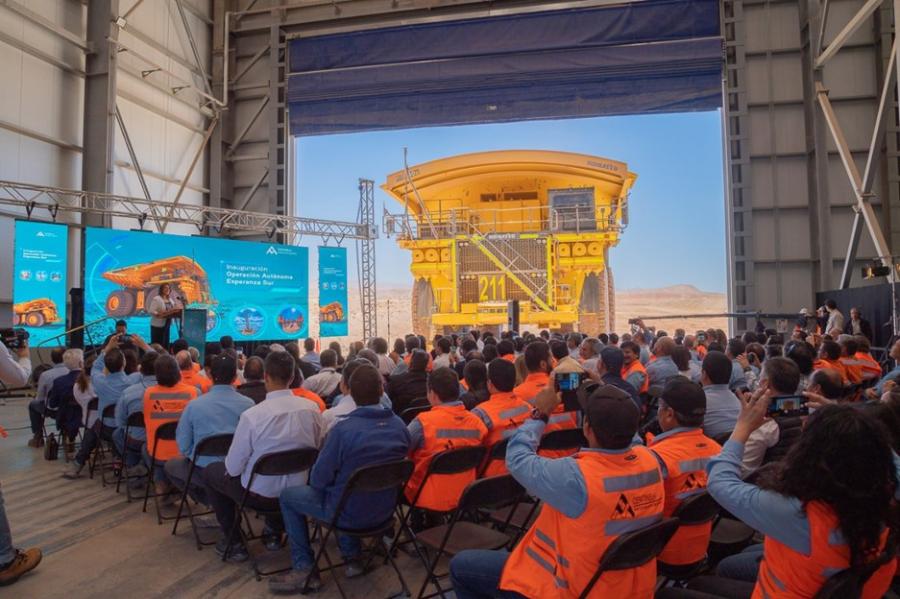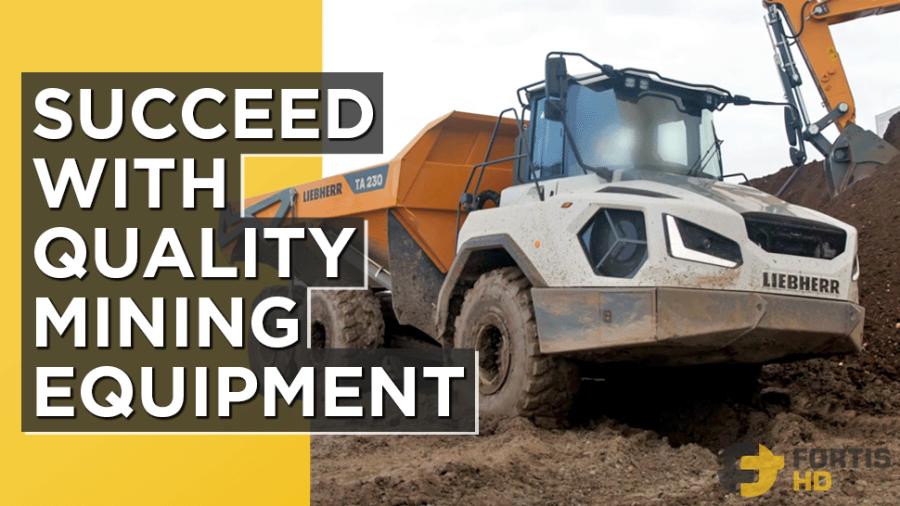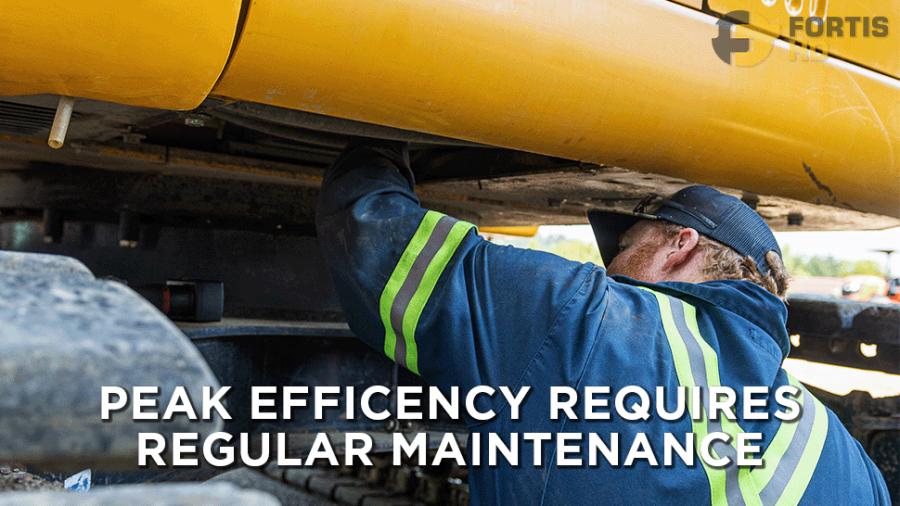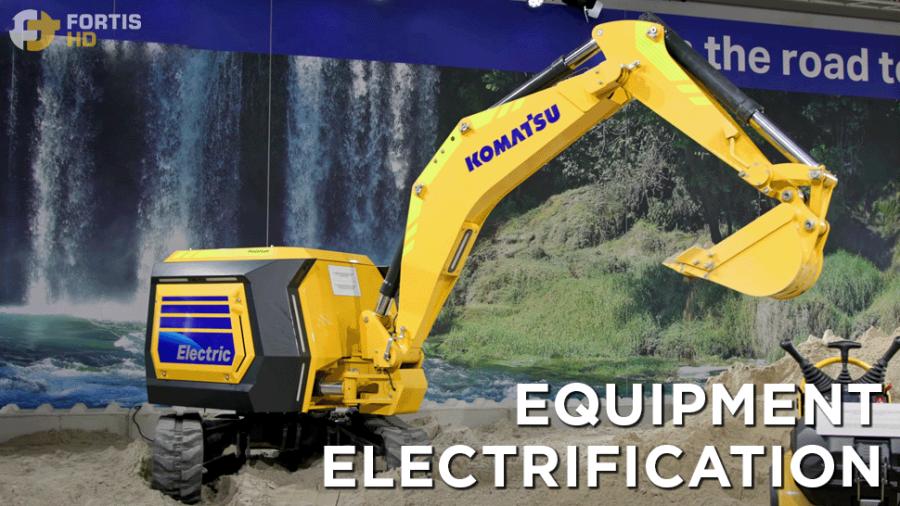The mining industry's importance relies on its impact on the worldwide economy and its consequences on the environment.
It is an important source of employment in many countries, contributing to everyday products and services, including construction materials, electronics, transportation, energy, medical products and food.
However, it is an industry that also impacts the environment where it operates considerably and negatively. From start to finish, the operations to find, get and process the raw materials disrupt ecosystems, pollute water and air, and generate waste.
Mining companies face internal and external challenges during operations, especially balancing profitability, safety and sustainability.
Companies can't measure success only due to revenue. The safety and well-being of their employees and neighboring communities and reducing their environmental impact during and post-operations are also factors to consider a mining project to be successful.
Mining companies are leveraging technology advancements of quality equipment to succeed further in efficiency, safety and sustainability.
Safety and Quality Equipment
When talking about quality equipment, particularly in the mining industry, we refer to machinery and tools that meet rigorous demands but also contribute to the success of mining operations regarding safety.
Most modern, high-quality equipment contributes to safety by taking workers out of risky situations.
Due to automation and remote controls, miners can blast from a safe distance and spend less time inspecting underground mines where roof collapsing is always a risk factor.
However, quality equipment doesn't necessarily mean brand new. A used equipment fleet in peak conditions through scheduled inspections, maintenance, and service will also deliver on performance and safety.
Consider the following case. In 2022, a contractor of Freeport-McMoRan lost his life due to a brake failure accident. Although the brakes were not in good condition, they could've prevented such an accident with a pre-operation inspection.
Mining companies are adopting industry standards and regulations for equipment quality, enhancing the safety of their employees and contractors.
A clear example that goes hand-by-hand with the case of the Freeport-McMoran contractor is the new and improved regional vehicle safety standard for light vehicles fleet that BHP (Broken Hill Proprietary Company Limited) implemented in their Chilean operations.
The standard features a 5-star Latin New Car Assessment Program (NCAP) rating (integrating seatbelt reminders and other technologies promoting seatbelt usage), an anti-lock braking system, autonomous emergency braking, lane departure warning system, adaptive cruise control, electronic stability control, tire pressure monitoring system, among others.
Lastly, as necessary to regularly maintain new and used machinery is to do it correctly. Knowing the size and specifications of heavy equipment parts is key for proper maintenance and safety.
Here's a thorough guide to Finding your Heavy Equipment's Rubber Track Size to avoid the risk of accidents due to de-tracking.
Efficiency and Productivity
In the rest of this article, we'll focus on the benefits of investing in brand-new, cutting-edge quality equipment.
Right off the bat, new equipment won't need major maintenance apart from the hour service intervals. Thus, you don't have to worry about downtime due to breakdowns.
The design and manufacturing of modern equipment lead to higher efficiency, like loaders with improved basic features such as bigger buckets.
In December 2022, Freeport-McMoran saw the opportunity to tackle more productivity and sustainability in their Tyrone, N.M., mine with a new fleet of diesel-electric Komatsu haul trucks that can scoop bigger loads while cutting fuel consumption and carbon emissions.
"It has a bucket that can handle about 25 percent more material than the old models. That alone means faster loading and shorter waits for haul trucks, which translates to greater operational efficiency," said Ron Gerdes, manager, Operations-Tyrone.
Besides better and bigger attachments, there have also been improvements in mining machinery due to new technologies and automation, leading to equipment needing a minimum human interface.
Technology is reshaping how mining companies operate from enormous autonomous haul truck fleets like BHP's 41 Komatsus 930e at the South Flank mine to Freeport McMoran's remote-control crawler inspecting the Grasberg Block Cave.
Environmental Responsibility
Nowadays, a trending term in the mining industry is decarbonization, a goal mining companies aggressively pursue. Decarbonization is the reduction of greenhouse gas emissions from the atmosphere.
Equipment electrification (switching from diesel fuel to electricity) is one of the first steps in reducing environmental impact.
Quality electric equipment instantly reduces exhaust gases. Besides, the lack of fuel engines, with fewer and more durable parts, and electric actuators instead of hydraulic cylinders also contribute to reducing waste — worn-out oil and parts.
The transition from diesel fuel to electric vehicles is still in process, yet other sustainable technologies in mining equipment are becoming a future trend, like green hydrogen.
Green hydrogen technology is still in its early stages for use on mining equipment. Its main environmental benefit is reducing greenhouse gas emissions, producing only water vapor as exhaust.
Several companies are considering switching their fleets to green hydrogen technology. One of them is Antofagasta PLC, a Chilean-based copper mining company with a proven environmental record, aiming to neutralize its carbon footprint through green hydrogen technology to mitigate the inevitable impact of its operations.
Cost-Effectiveness
New equipment is expensive, but an upfront benefit is having non-depreciated machines. You won't have to worry about expensive maintenance or repair costs in the first years of usage, especially if you consider investing in electric equipment.
Electric machinery has fewer moving parts and fluids leading to less maintenance than fuel engine equipment. Plus, you'll get rid of diesel expenses.
Even better, some manufacturers now claim operational durations of up to 12 hours on a single charge for electric trucks, significantly longer than diesel-powered haul trucks, which typically last for only 4-6 hours on a single fuel tank.
Besides fewer parts mechanisms, automation has contributed to more efficient failure diagnosis, reducing labor costs and improving safety for maintenance crews.
Automation and telematics are synonyms for quality equipment, and some companies understand the link between quality and cost savings. Proof of that is BHP's Dash Maintenance Tool.
It allows maintenance and service teams to undertake diagnostic tests at a safe distance through a network of sensors on the vehicles or equipment, reducing the time to diagnose faults, thus shortening service time and enabling machinery to get back to work faster.
Besides the operational benefits, the availability of quality equipment within your fleet will boost competitiveness in the marketplace, which was one of the reasons for Antofagasta PLC to acquire and use a new fleet of autonomous haul trucks in the Chilean pit "Esperanza Sur" at Centinela (we'll talk more about this later).
No matter the quality and features, heavy equipment will eventually need maintenance. Learn how to maximize your heavy equipment's lifespan with proper maintenance intervals.
Challenges and Solutions
Unless you have a company with a robust financial muscle like Rio Tinto, BHP, or Newmont, the most obvious challenge is the upfront cost of purchasing equipment.
To know how much money we are talking about, Newmont invested $150 million in a fully autonomous haulage fleet of 36 trucks to operate at Boddington Mine in western Australia.
Leasing and renting are two effective options for small companies and startups. The main difference relies on the duration of the arrangement, the intent for ownership, and the financial structure. For those who prefer renting over leasing, we recommend visiting Rent1 USA to explore excellent rental options.
Companies can also leverage tax benefits and other financial incentives from their governments to acquire quality equipment.
The U.S. government has developed several incentives to promote companies switching from diesel to green energy.
The Inflation Reduction Act (IRA) provides significant tax breaks for businesses that purchase new heavy-duty electric vehicles, while the Diesel Emissions Reduction Act (DERA) Program awards grants and rebates to users switching from diesel engines.
Beyond the purchasing economical challenge, there's always a training period — involving time and resources — to implement new equipment and technologies, whether to prepare seasoned miners to use new tech or teach new tech-savvy employers the nuances of mining operations.
Case Study

Announcement of Centinela autonomous haulage system. (www.antofagasta.co.uk photo)
Let's wrap up everything we've talked about quality equipment with a case study involving an autonomous haulage project from Antofagasta PLC at its Esperanza Sur pit (Chile).
What equipment did they invest in?
In October 2021, Antofagasta acquired 11 Komatsu 980E-5 autonomous trucks and two PV-351 diesel autonomous drill rigs.
What were the measurable outcomes?
According to Patricio Picero, Centinela's Implementation Manager for the Remote Operations Centre and Autonomous Equipment, since the autonomous system began operating in 2021, it has drilled and hauled over 40 million tonnes of copper ore.
The project also allowed employees to develop and strengthen other skills such as working online, adaptability, flexibility and collaboration, Picero added.
Alan Muchnik, Antofagasta's Vice President of Strategy and Innovation, said that the autonomous system, coupled with the new Remote Operations Centres, allows them to make decisions based on data and in real-time.
Lessons learned
There has always been the concern that companies will need fewer operators when incorporating autonomy into equipment and processes. However, workers at Antofagasta have learned to see technology as a business opportunity rather than a threat.
Conclusion
Despite the high purchase investment in quality equipment, it's a cost-effective strategy in several ways:
- Fewer maintenance and repair costs and increased operational safety.
- Latest technologies for efficiency, increasing productivity, and profitability.
- Market competitiveness.
- Sustainable operations through eco-friendly technologies.
Don't let the upfront cost hold you back. Opt for leasings or rental companies to kick-start your project.
If you have the option for a complete purchase, consider electric or eco-friendly (green-hydrogen) vehicles and opt for government incentives for companies switching from diesel to green energy.
Today's top stories
























